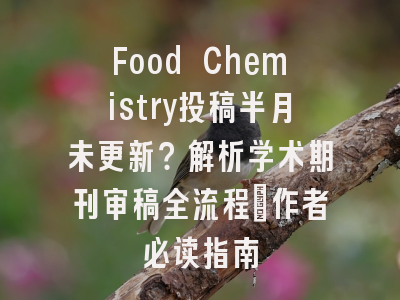Petroleum Chemistry – The Molecular Symphony Beneath Our Feet|From Black Gold to Modern Marvels|Decoding the Energy Alchemy of Our Time
本文深入探讨石油化学的核心机理与应用前沿,系统解析从原油组分分析到现代精炼工艺的技术演进,重点阐述烃类转化机理、催化剂创新及可持续能源转型背景下该学科的发展方向。文章通过八大知识模块,构建完整的石油化学知识体系框架,助力读者全面理解这一支撑现代工业的支柱学科。
The Fundamental Building Blocks of Petroleum Chemistry
Understanding the molecular composition of petroleum is fundamental to petroleum chemistry. Crude oil contains over 500 identifiable hydrocarbon compounds, ranging from simple methane molecules to complex asphaltenes. Advanced analytical techniques like gas chromatography-mass spectrometry (GC-MS) now allow precise characterization of these components, revolutionizing our ability to optimize refining processes. The unique carbon-hydrogen architectures in petroleum derivatives directly dictate their physical properties and chemical reactivity.
Fractional distillation remains the cornerstone separation method in petroleum refineries. This thermal process cleverly exploits the varying boiling points of hydrocarbon chains. Did you know a typical distillation tower can separate crude oil into 15 distinct fractions? From light naphtha (C5-C10) used in gasoline production to heavy residual oils powering industrial boilers, each fraction serves specific industrial purposes.
Modern petroleum chemistry increasingly focuses on molecular engineering solutions. Catalytic cracking innovations have boosted gasoline yields by 40% since 2000. The development of zeolite catalysts with precisely tuned pore structures exemplifies how nanotechnology is transforming traditional refining operations.
Hydrocarbon Transformation Mechanisms
Catalytic processes drive the molecular metamorphosis in petroleum chemistry. Three primary reaction types dominate industrial operations: cracking, reforming, and alkylation. Thermal cracking at 450-750°C breaks long-chain hydrocarbons, while catalytic variants using acid catalysts operate at lower temperatures with higher selectivity. The continuous quest for catalyst durability has led to remarkable materials like mesoporous silica-alumina composites.
Hydrotreating units demonstrate environmental progress in petroleum processing. These systems remove sulfur and nitrogen contaminants through catalytic hydrogenation, reducing SOx emissions by 90% in modern refineries. The latest cobalt-molybdenum catalysts achieve desulfurization rates exceeding 99.5%, enabling production of ultra-low-sulfur diesel fuels.
Polymerization reactions in petroleum chemistry create valuable petrochemical precursors. The conversion of propylene into polypropylene illustrates how simple olefins become versatile plastics. Recent advances in metallocene catalysts now allow precise control over polymer chain branching and molecular weight distributions.
Petrochemical Value Chain Economics
The economic landscape of petroleum chemistry reveals complex global interdependencies. A single barrel of crude oil yields about 45% transportation fuels, 28% industrial feedstocks, and 12% specialty chemicals. The ethylene production capacity metric has become a key indicator of national petrochemical competitiveness, with China’s ethylene output surpassing 30 million tons annually.
Market dynamics in petroleum derivatives show fascinating patterns. While gasoline demand peaks in summer, heating oil consumption spikes during winter months. The growing petrochemical sector now accounts for 14% of total oil consumption, projected to reach 20% by 2040 according to IEA forecasts.
How do geopolitical factors influence petroleum chemistry operations? Crude oil quality variations directly impact refinery configurations. Light sweet crude from the North Sea requires different processing than heavy sour crude from Venezuela, demonstrating the intricate link between resource geology and chemical engineering solutions.
Environmental Challenges and Sustainable Solutions
Green chemistry principles are reshaping traditional petroleum processing. Carbon capture utilization and storage (CCUS) technologies now achieve 90% CO2 capture rates in advanced refineries. The integration of biofeedstocks through co-processing in existing units offers a transitional pathway towards renewable hydrocarbons.
Plastic waste upcycling presents both challenges and opportunities. Advanced pyrolysis techniques can convert mixed plastic waste into synthetic crude oil with 85% efficiency. Chemical recycling innovations are creating circular economy models where polymer waste becomes valuable petrochemical feedstocks.
The hydrogen economy intersects with petroleum chemistry through clean fuel production. Blue hydrogen from natural gas with carbon capture competes with green hydrogen alternatives. Membrane separation technologies for hydrogen purification have achieved 99.99% purity levels, meeting fuel cell vehicle standards.
Digital Transformation in Refining Operations
Artificial intelligence is revolutionizing process optimization in petroleum chemistry. Machine learning algorithms now predict catalyst deactivation patterns with 95% accuracy, enabling proactive maintenance. Digital twin simulations of distillation columns have reduced energy consumption by 18% in pilot installations.
Blockchain applications enhance supply chain transparency. From wellhead to gasoline pump, distributed ledger technologies track product quality parameters and carbon footprints. Smart contracts automatically execute crude oil trades when predefined quality specifications are met.
The Industrial Internet of Things (IIoT) enables real-time monitoring of critical parameters. Wireless sensor networks in catalytic reformers provide 5000 data points per second, feeding predictive analytics models. This data-driven approach has decreased unplanned shutdowns by 40% in modern refineries.
Advanced Materials from Petroleum Derivatives
Petroleum chemistry enables the creation of tomorrow’s smart materials. Carbon fiber production from petroleum pitch achieves tensile strengths exceeding 5 GPa. These lightweight materials are transforming aerospace and automotive industries, reducing vehicle weight by 30% compared to steel components.
Specialty polymers demonstrate remarkable functionalities. Shape-memory polyurethanes derived from petroleum-based diisocyanates can “remember” original configurations after deformation. Conductive polymers like polyaniline find applications in flexible electronics and biosensors.
Nanotechnology innovations leverage petroleum feedstocks. Carbon nanotubes synthesized from methane exhibit exceptional electrical conductivity. Graphene production via chemical vapor deposition using hydrocarbon gases achieves 95% monolayer purity for next-generation battery electrodes.
Energy Transition and Future Pathways
The role of petroleum chemistry evolves in the low-carbon era. Bio-crude oil production through hydrothermal liquefaction of algae achieves 70% energy efficiency. These third-generation biofuels maintain compatibility with existing refinery infrastructure while reducing lifecycle emissions by 80%.
Electrochemical conversion routes offer exciting possibilities. CO2 electrolysis to ethylene demonstrates 60% faradaic efficiency in laboratory settings. Plasma-assisted methane reforming produces hydrogen and solid carbon with zero CO2 emissions.
How will petroleum chemistry adapt to renewable energy integration? Solar-thermal enhanced oil recovery techniques increase heavy oil production while utilizing renewable heat. Wind-powered electrolysis units at refineries produce green hydrogen for cleaner fuel manufacturing.
Global Research Frontiers and Innovations
Cutting-edge research pushes the boundaries of petroleum chemistry. Single-atom catalysts achieve unprecedented activity in methane conversion. Platinum catalysts with 100% atomic dispersion demonstrate 10-fold higher reactivity in propane dehydrogenation compared to traditional nanoparticles.
Advanced characterization techniques reveal molecular secrets. In-situ transmission electron microscopy captures real-time catalyst structural changes during reactions. Synchrotron X-ray absorption spectroscopy maps elemental distributions in working catalysts at nanometer resolution.
Quantum computing applications promise breakthroughs in molecular modeling. Simulating hydrocarbon cracking pathways on quantum processors could accelerate catalyst discovery. Early experiments with 50-qubit systems have successfully modeled benzene adsorption on metal surfaces.
Petroleum chemistry stands at the crossroads of tradition and innovation, continually reinventing itself to meet evolving energy and material demands. From molecular-level catalyst design to industrial-scale sustainable solutions, this discipline remains indispensable in our modern world. As the energy transition accelerates, petroleum chemistry’s ability to integrate renewable resources and circular economy principles will determine its enduring relevance in the 21st century’s technological landscape.
© 版权声明
本文由分享者转载或发布,内容仅供学习和交流,版权归原文作者所有。如有侵权,请留言联系更正或删除。
相关文章

暂无评论...




















